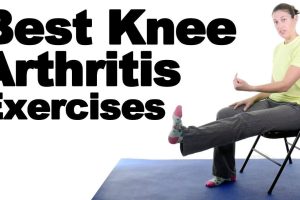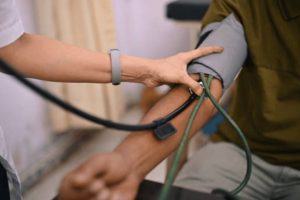Content Attributes
The field of physical therapy eclipses more conditions and treatment options than one might think on the surface. You don’t need to get into an auto accident in Denver today to potentially need a physical therapist. It could be as simple as needing to address management for chronic pain or recovering from an injury with persisting complications. Physical therapy, by definition, cares aims to ease pain and help you function, move, and live a more comfortable life.
There were 312,716 licensed physical therapists and 127,750 licensed physical therapist assistants in the United States in 2019, according to the Federation of State Boards of Physical Therapy. Compare those numbers to dentists in the U.S., sitting at roughly 163,000, and nurses, just above 3 million, and physical therapy emerge as a strong pillar of the medical community with relatively high demand in America.
Physical therapists, or PTs, can work in a solo practice setting, or in hospitals, schools, sports facilities, rehab centers, private medical offices, and in other capacities. But before searching for PT help, it’s important to know what treatment options PTs offer.
What Do Physical Therapists Do?
The first time you see a PT, they will examine you and ask you questions about why you need help, address your pain and other symptoms, and see what tasks you’re able to perform or having trouble in. They’ll inquire about your medical history, sleep patterns, daily levels of pain and discomfort, and more, before deciding on a potential road forward.
After your initial meeting, a PT will introduce tests to determine your level of mobility and ability to perform certain tasks. These tests could address your ability to walk, climb stairs, bend, reach, or grasp objects. They’ll examine your balance and stability and check your heart rate while doing certain activities in an effort to determine a diagnosis.

When a diagnosis has been reached, a treatment plan will be developed and introduced, outlining a timetable for recovery by setting goals and milestones to achieve on the way through certain rehabilitation tactics. Treatment options, depending on the situation, could look like, but are not limited to:
- Guided exercises or daily stretches
- Massage therapy
- Heat or cold therapy
- Ultrasound therapy to ease muscle spasms or pain
- Rehab to learn to use an artificial limb
- Practice balancing objects, like a cane
The timetable for recovery will depend greatly on why you need help from a physical therapist. Below are five common reasons someone might pursue PT treatment.
Sports Or Physical Injury Recovery
Sports are a leading cause for the need for physical therapy since sports provide excessive strain on muscles, joints, and bones in the body. Physical therapy can help regain mobility or strengthen damaged tissue suffered during a sports injury. It can also prevent future injuries to the same location on the body, and help weed out recurring issues in recovery.
PTs can offer expert advice and education to young athletes about how to best take care of their bodies so injuries won’t occur again in the future. Often PTs become the de facto emotional caretaker of athletes as well since an athlete’s confidence or mental health can take a hit from a traumatic or sidelining injury.
Car Accident Complications
Car accidents can result in common injuries or complications like whiplash, head or back pain, shoulder pain, knee pain, and other serious injuries, which can lead to both short and long-term complications. A PT can help ease a car accident victim back into their normal routine by performing any number of tasks from addressing and managing pain to teaching a patient to relearn to walk. A PT can introduce manual therapy to mobilize joints, decrease or heal scar tissue, reduce inflammation, and promote long-term tissue healing.
No matter the severity of the injury, physical therapy can help improve a victim’s quality of life in big and small ways through specific treatment plans.
Incorporating cold therapy, such as the Aircast Cryo Ankle Cuff available at Cold Therapy, into your physical therapy routine may provide additional relief for common reasons like muscle strains and joint injuries
Pelvic Floor Conditions
The pelvic floor is the collection of muscles that form a sling or hammock along the floor of the pelvis. These muscles help with posture, sexual activity, bladder and bowel activity, and other important daily activities. When these muscles are damaged or overused, humans experience pain, a lack of control over their bathroom functions, back discomfort due to bad posture, and other symptoms that come with pelvic floor dysfunction.
A physical therapist can provide relief to those who have symptoms as a result of pelvic floor issues, such as pelvic pain, pregnancy or postpartum recovery or discomfort, painful intercourse, incontinence, endometriosis, and other issues.
Cardiopulmonary Conditions
Physical therapy can help individuals with cardiovascular or pulmonary conditions by improving and teaching them new and optimal breathing techniques. This can improve their aerobic capacity and allow for a better quality of life by distributing more oxygen to the patient’s body. Common cardiopulmonary conditions treated by physical therapists include asthma, heart failure, emphysema, cystic fibrosis, and chronic bronchitis. Treatment options could look like breathing exercises, graded exercises while monitoring cardiac and pulmonary function, and other guided methods of relief and rehabilitation.
Neurological Conditions
Conditions such as stroke, spinal cord injuries, Parkinson’s disease, multiple sclerosis, vestibular dysfunction, and traumatic brain injuries can be treated using physical therapy as well. It can improve a patient’s motor control or strengthen weakened muscles, address acute complications like a loss of grip strength, and improve coordination, balance, and mobility overall. Physical therapy for neurological reasons could be either inpatient or outpatient depending on the severity of a patient’s condition.
It can delay the onset or severity of chronic systems that get worse with certain conditions or after certain injuries. Overall, it’s an effort to improve the movement and quality of life of someone with conditions that hinder their everyday activities.
Conclusion
Physical therapists work hand-in-hand with massage therapists, rehabilitation professionals, chiropractors, and other medical professionals on a daily basis, and often coordinate treatment plans with them for their patients. Physical therapy can be a beneficial solution for a variety of different ailments and conditions, from reducing pain and discomfort to changing someone’s life entirely.
For more information about physical therapy in the United States, visit WebMD’s webpage detailing an overall view of the practice.



